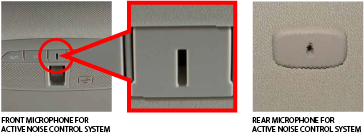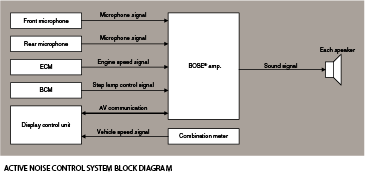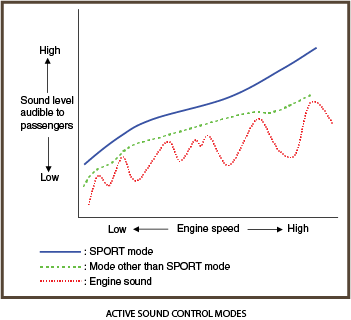
Matching the inspired Infiniti Q50 exterior design and new performance technology is an interior created to the same extraordinary standards. The interior environment offers a powerful blend of three-dimensional textures, highest craftsmanship and premium quality, combining modern luxury and user-focused advanced technology. The roomy interior space offers ample front and rear head room, ample rear knee room enhanced by the seatback design.
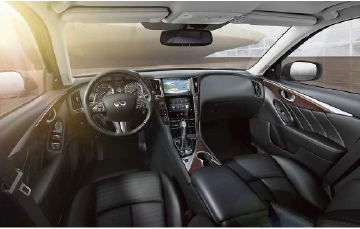
The front and rear seats are a new breakthrough in ergonomic design, developed to help distribute body pressure across a wider range of the upper seating surface. The new thin front seatback design provides for greater front seat slide and lift adjustability. Front and rear seat hip points have also been adjusted for greater support for the pelvis and the self-weight of the chest. The product of extensive research into human posture; it strikes an exquisite balance between beauty and comfort.
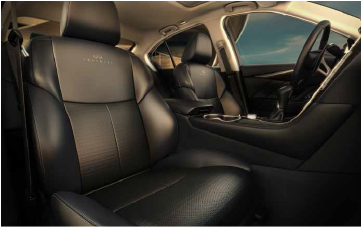
The Q50 is equipped with an 8-way power driver seat (slide, recline, lift, thigh support) with manual lumbar support and an 8-way power passenger seat (slide, recline, lift, thigh support). The Q50 also has standard leatherette seating surfaces and available leather seats (front and rear). The Q50 HEV has leather standard.
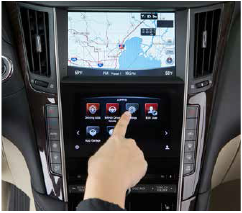
The Q50’s instrument panel utilizes Infiniti’s “double wave” design tradition, while updated with a new asymmetrical flow from the top of the center cluster to the wide center console. Access to all key operations and controls is designed so that the driver does not need to change driving posture, including use of hard switches, touch panels and drive mode selector controller.
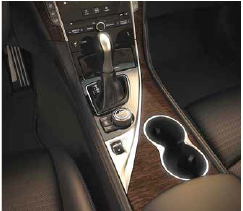
The elegant interior features include:
- Leather-covered steering wheel with illuminated controls for audio, cruise control and voice recognition
- Kacchu aluminum trim on center console, instrument panel and doors
- Manual anti-glare rear view mirror
- Manual tilt and telescopic steering column
- Fine Vision Electroluminescent Instrumentation TFT color meter display with Vehicle Information Display
- Front door aluminum Infiniti kick plates (non-illuminated
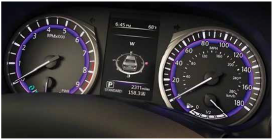
Other features include: Dual-Zone Automatic Temperature Control, Bluetooth® Handsfree Phone System, RearView Monitor and available Advanced Climate Control System (ACCS) with Plasmacluster® air purifier, and Around View® Monitor with Moving Object Detection.
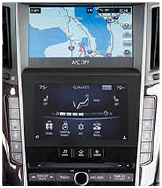
Active Noise Control
The Q50 HEV’s quiet cabin is augmented by Active Noise Control.
Active Noise Control detects low-frequency engine sounds in the cabin and generates acoustically opposite sound waves to cancel the engine sounds.
The Active Noise Control system on the Q50 uses the front door woofer, rear door speaker and rear woofer on vehicles equipped with Bose® audio systems to generate anti-phase sound waves.
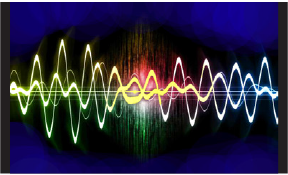
Anti-phase sound waves are in opposite phase to the undesirable engine sounds to be canceled. Undesirable engine sounds include low-frequency sounds created at low engine speed when optimizing performance for fuel economy and from exhaust back pressure during high-performance driving.
Based on signals detected by the front and rear microphones, the BOSE® amplifier generates antiphase sound waves weakening interior engine booming noise in real time. This is done according to a unique algorithm by a Digital Signal Processor (DSP) built in the BOSE® amplifier.
The BOSE® amplifier mixes the sound signal received from the AV control unit with the engine sound that is generated in the BOSE® amplifier and transmits the sound signal to each speaker. It is not white noise. It is not masking other noises. It is simply going head-to-head with the engine noise and canceling it, so the customer can hear what they really want to hear.
